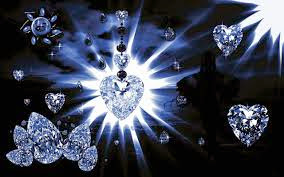
Ranging from foods to creams to gems to things the average person can’t fathom, we pulled together a list of 19 of the most expensive stuff in the world. Learn what makes these 16 materials so expensive. You won’t believe what people are doing to get their hands on these expensive substances.
Antimatter
Antimatter is composed of antiparticles, which have the same mass as particles of ordinary matter, but have opposite charge and other particle properties. The reason antimatter is so expensive is that it’s very, very hard to make, and does not last long in our regular-particle-filled world: antimatter is currently made in batches that are measured by the number of atoms, and lasts only minutes.
Californium 252
Californium-252 is a rare radioactive isotope used commercially as a reliable, cost-effective neutron source for prompt gamma neutron activation analysis (PGNAA) of coal, cement and minerals, and for detection and identification of explosives, land mines and unexploded military ordnance. It also includes cancer treatment.
Diamonds
Diamond is renowned as a material with superlative physical qualities, most of which originate from the strong covalent bonding between its atoms. In particular, diamond has the highest hardness and thermal conductivity of any bulk material.
Tritium
Tritium is a radioactive form of hydrogen, made naturally by cosmic rays, and synthetically in nuclear reactions (including nuclear weapons tests). It’s used in fusion reactors and neutron generators.
Taaffeite Stone
Taaffeite is made up of magnesium, beryllium and aluminum. It is the first known gemstone that has beryllium and magnesium as major parts. The gemstone displayed double refraction, while a spinel does not.
Plutonium
Plutonium is a radioactive element most famous for its role in generating nuclear power through nuclear fission — both in peacetime and in war (via atomic bombs). It is poisonous, flammable, and radioactive, but occurs only in trace quantities in nature.
Lysergic Acid Diethylamide (LSD)
Lysergic acid diethylamide, abbreviated LSD or LSD-25, is the most expensive drug. A very strong, mood-altering hallucinogen by its incredibly small dosage.
Cocaine
Cocaine is a bitter, addictive pain blocker that is extracted from the leaves of Erythroxylon coca, also known as the coca scrub, a plant that comes from the Andean highlands in South America. Cocaine is the most powerful stimulant of natural origin.
Heroin
Heroin is processed from morphine, which in turn comes from the poppy plant. Heroin usually appears as a white or brown powder. Heroin is a highly addictive drug. It is typically sold as a white or brownish powder or as the black sticky substance known on the streets as “black tar heroin.”
Platinum
Platinum is indeed a special substance, with value in industry, ornament and environmental improvement. More than 20% of all consumer goods either contain platinum or are produced using platinum; it’s in jewelry and catalytic converters, electronics and anti-cancer drugs… and eight tons of ore produce just an ounce of it.
Gold
Pure gold is soft and is usually alloyed with other metals, such as silver, copper, platinum or palladium, to increase its strength. Gold alloys are used to make jewelry, decorative items, dental fillings and coins. Gold coated mirrors can be used to make telescopes that are sensitive to infrared light.
Saffron
Saffron has an aroma and flavor which cannot be duplicated, and a chemical make-up which, when understood, helps the chef or home cook to know how to best release that flavor and aroma in cooking and baking. Saffron is sold in two forms, powder and threads, and each behaves very differently in the kitchen.

